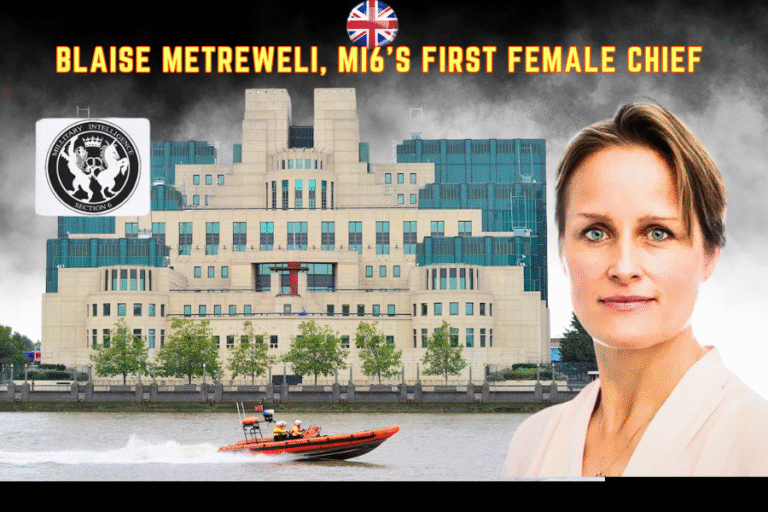(By Khalid Masood)
In aerial warfare, few machines command the reverence of the Rafale, a French-crafted marvel whose wings have borne the weight of countless triumphs. However, on the fateful night of May 7, 2025, the skies over Kashmir and the Indo-Pakistani frontier bore witness to a staggering reversal—one that defied expectations. Pakistan’s J-10C fighters, armed with the PL-15E missile, felled four of these vaunted jets, alongside a Su-30MKI and a MiG-29, in a clash that has since set the world abuzz. So, how did the Pakistan Air Force, outnumbered and wielding Chinese steel, achieve such a feat against the Indian Air Force’s formidable armada? To understand this, let us first unravel the Rafale’s prowess, then probe the clash’s dynamics, and finally discern the alchemy behind Pakistan’s improbable victory.
The Rafale: A Titan of the Skies
The Dassault Rafale, a 4.5-generation multirole fighter, stands as a pinnacle of aeronautical artistry. First delivered to India in 2019, its twin-engine delta-wing design marries agility with versatility, capable of air superiority, ground attack, and reconnaissance. Armed with the Thales RBE2 AESA radar, the SPECTRA electronic warfare suite, and a suite of weapons—including MICA air-to-air missiles, SCALP cruise missiles, and HAMMER bombs—it boasts unmatched situational awareness and survivability. Its combat record, from Libya’s skies in 2011 to strikes against ISIS in Syria, attests to its lethality, with no losses in prior conflicts.
India’s fleet of 36 Rafales, acquired at a cost of $7.4 billion, was heralded as a counterweight to regional rivals. Their precision strikes during Operation Sindoor on May 7, 2025—targeting nine sites in Pakistan—were intended as a demonstration of overwhelming force.
And yet, this titan met its match. The Pakistan Air Force’s claim that four Rafales, along with a Su-30MKI and a MiG-29, fell to their J-10C fighters reads like an unbelievable narrative—and yet, it demands examination.
The Clash of May 7, 2025: A Tempest Unleashed
The night of May 7, 2025, witnessed India’s launch of “Operation Sindoor,” a retaliatory strike following the April 22 Pahalgam attack. The Indian Air Force (IAF) deployed 80 advanced jets, including Rafales, which launched SCALP and HAMMER munitions from 25–150 km inside Indian airspace to avoid Pakistan’s air defenses.
In response, Pakistan, reportedly armed with prior intelligence, scrambled 27 aircraft—including J-10C and JF-17 jets—forming a swift and calculated counteroffensive.
According to PAF claims, their J-10Cs, armed with PL-15E missiles, downed five IAF aircraft—three Rafales, one MiG-29, one Su-30MKI—and a Heron drone. A fourth Rafale, allegedly lost later that night, brought the total to four. U.S. and French intelligence confirmed at least one Rafale shot down by a J-10C, while debris found in Indian-administered Kashmir and Punjab suggested the loss of at least two French jets.
India neither denied nor confirmed these claims. While initially dismissing the wreckage images as disinformation, a later press briefing offered a carefully worded admission: “Losses are part of combat.”
Nevertheless, much of the Western media—and social media—accepted PAF’s version of events as plausible.

The J-10C and PL-15E: Pakistan’s Instruments of Defiance
The Chengdu J-10C, a 4.5-generation multirole fighter inducted by Pakistan in 2022, features an AESA radar, advanced avionics, and a stealth-optimized inlet design. Though it may trail the Rafale in terms of electronic warfare capability, its agility, affordability ($50 million vs. Rafale’s $240 million), and sheer availability make it a compelling asset.
Pakistan currently operates approximately 20 J-10Cs, with 36 more on order, alongside its JF-17 Block III fleet. Both platforms are equipped with the PL-15E missile—a beyond-visual-range (BVR) air-to-air missile with a 145 km range and active radar guidance, far exceeding the Rafale’s MICA missile (80 km range).
This extended reach allowed PAF pilots to engage IAF jets from a standoff distance—reportedly as far as 160 km—taking full advantage of BVR combat. Pakistani sources, amplified by Chinese media, claim the J-10C’s electronic warfare systems jammed the Rafale’s radar, crippling the SPECTRA suite and leaving the French jets vulnerable.
Social media discussions, particularly on platform X, credited the PL-15E’s AESA seeker and J-10C’s electronic countermeasures as pivotal in neutralizing the Rafale’s defenses.
How Did the Pakistan Air Force Achieve This Feat?
The Pakistan Air Force’s (PAF) reportedly remarkable performance during the May 2025 engagements—despite India’s numerical and technological superiority—can be attributed to a confluence of critical factors. Let us now examine the elements that may have shaped this unexpected outcome:
1. Tactical Foresight: Pre-Emptive Positioning and BVR Supremacy
PAF’s use of early intelligence on IAF’s strike routes allowed the timely deployment of J-10Cs into ideal intercept positions. Engaging from 100 to 160 km, well outside the Rafale’s effective combat radius, the PL-15E missiles allowed PAF to strike without entering close quarters—neutralizing one of the Rafale’s key advantages.
Notably, debris of a PL-15E missile was reportedly found in Hoshiarpur, India—nearly 200 km from a crash site—bolstering claims of its operational use at extreme ranges.
2. PL-15E Missiles: Redefining the Rules of Engagement
China’s PL-15E has emerged as a game-changing missile in the realm of BVR combat. Its AESA-guided seeker, dual-pulse rocket motor, and two-way datalink reportedly granted Pakistani pilots a lethal combination of precision, range, and in-flight targeting flexibility.
In fact, some Western defense analysts have drawn comparisons to the U.S. AIM-260 program, suggesting that PL-15E’s battlefield effectiveness may have prompted a renewed sense of urgency in Western missile development efforts.
3. Electronic Warfare Capabilities: Testing the Limits of Rafale’s SPECTRA
Reports from PAF suggest the use of KG600 ECM pods aboard J-10Cs to jam Indian sensors. While Rafale’s SPECTRA suite is widely regarded as cutting-edge, some analysts argue that PAF successfully exploited specific operational vulnerabilities.
- Ground-Based Integration: Systems such as the LY-80 SAM and TPS-77 radar may have fed data into a broader sensor-fusion network, augmenting J-10C targeting.
- Electronic Saturation: During peak BVR exchanges, jamming efforts may have overwhelmed SPECTRA’s defenses—particularly near the Line of Control (LoC) in April skirmishes.
Though Indian defense officials have contested these accounts, the debate over electronic warfare dominance remains unresolved.
4. Operational Asymmetry: Missteps and Vulnerabilities
Certain operational choices by IAF may have inadvertently tilted the balance:
- Strike Loadouts: Rafales configured for bombing runs—carrying Spice-2000s—reportedly had reduced maneuverability and speed, rendering them easier targets.
- Radar Confusion: Debris from missiles may have been misidentified as aircraft wreckage, complicating damage assessments on both sides.
- Defensive Positioning: PAF aircraft operated closer to their own integrated defense zones, enhancing situational awareness and threat engagement capacity.
5. Pilot Preparedness and Morale
The PAF’s doctrinal focus on asymmetric aerial warfare and rapid interception scenarios appears to have borne fruit. Much like in Operation Swift Retort (2019), pilot training, mission clarity, and psychological readiness reportedly gave PAF crews the edge in decision-making under duress.
Conclusion
O, what a saga unfolded in the heavens of May 7—where the Rafale, a titan clad in French steel, met its match in Pakistan’s J-10C, a dragon armed with the PL-15E’s fiery breath. Through tactics honed by necessity, missiles that outranged their foes, and a spirit unbowed, the PAF wrought a triumph that shall be studied for ages.
And yet, as the fog of war continues to obscure absolute truths, we are reminded of an ancient wisdom: victories, like stars, shine brightest when tempered by humility. Let this clash—etched in fire and steel—not embolden future wars, but rather counsel restraint.
For in the end, it is not in conquest, but in concord, that peace truly endures.







